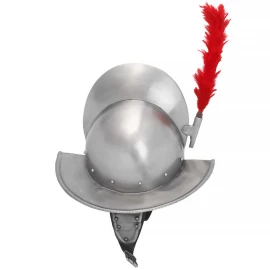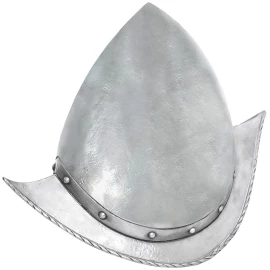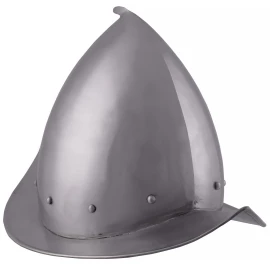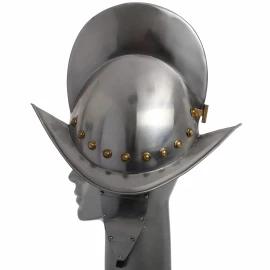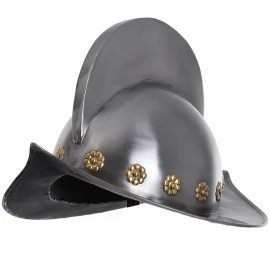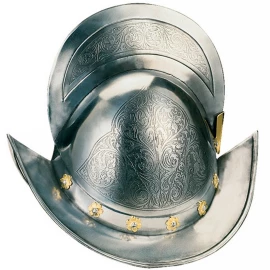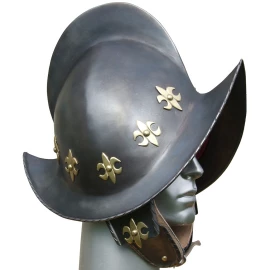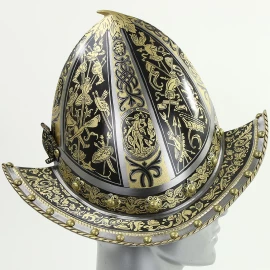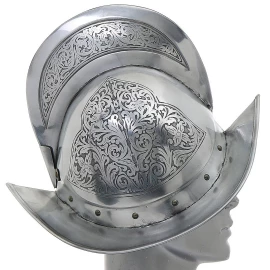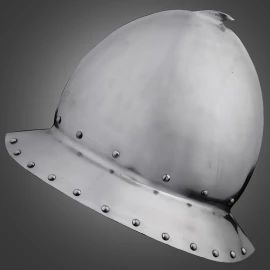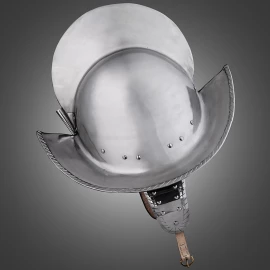Morions
Filter products
Morions
The morion's shape is derived from that of an older helmet, the Chapel de Fer, or "Kettle Hat." Other sources suggest it was based on Moorish armor and its name is derived from Moro, the Spanish word for Moor.
In England this helmet is associated with the New Model Army, one of the first professional militaries.It was worn by pikemen, together with a breastplate and buff coat as they stood in phalanx-like pike and shot formations, protecting the flanks of the unarmored musketeers.
The Cabasset, was introduced around the same time in Italy. Like its Spanish counterpart, it was worn by infantry in the pike and shot formations. The stalk-like projection on the top resembled a pear, which is how it gained its name. It was popular in 16th century England and was used during the Civil War. Several of these helmets were taken to the New World by the Pilgrim fathers, and one of these has been found on Jamestown Island.

